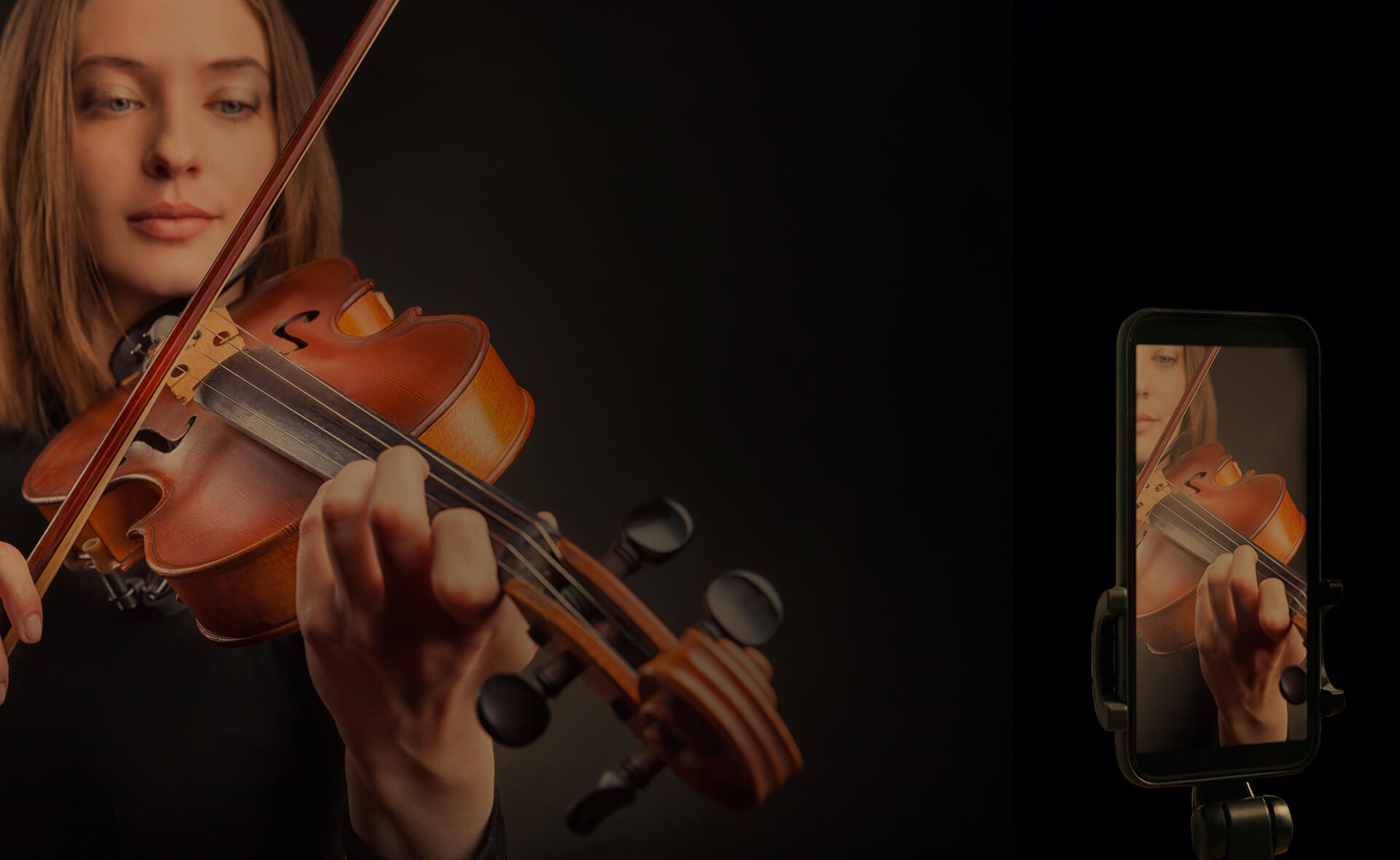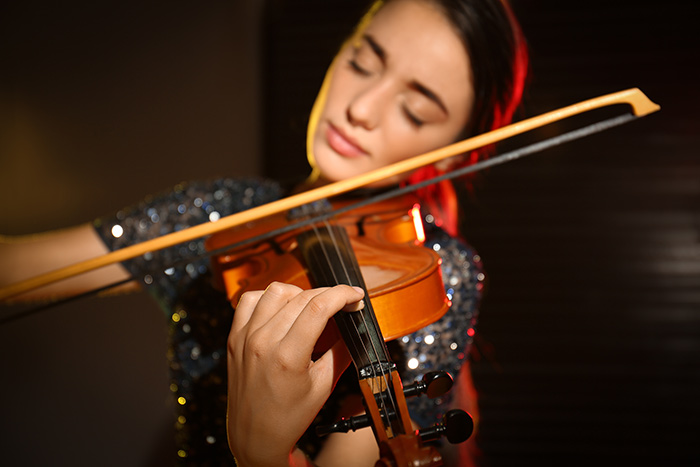It is important to note that the strings we use on our violins always affect the sound produced.
Therefore, it is very important to pick the right one. Here are some factors to consider when choosing the right strings:

Think About Your Violin
Strings come in various qualities, weights, and sizes. For example, if a violin is old and has a warm and mellow sound then it will sound better with strings made from synthetic cores which improve the richness and depth in them.
However, the new violins may be helped by steel strings on the contrary enhance brilliance and distinctness likewise. Discovering the best one among all violins in qualities of your own instrument, you must try different string types.

Material Matters
Violin strings often are made of steel, synthetic core, or gut. Here is a breakdown that you may find helpful in considering their differences:
Steel Core Strings:Recognised for their tough natures, steadiness, and bright sound projection. They are more appropriate for music that requires clear and bold sound such as contemporary music and bluegrass. With less sensitivity to weather conditions such as humidity and temperature, steel strings are a good choice for those who perform outside.
Synthetic Core Strings:Replicates the warmth and complexity of gut strings, but with improved reliability and durability. Classical musicians prefer them because they produce a nice sound in a variety of styles, unlike other types that are specialised. This is because unlike gut strings, they are not influenced by temperature or humidity changes and can therefore be used in many performances.
Gut Core Strings:Originally made from the intestines of sheep to provide a full and delicate tone esteemed by a number of performance artists on violin in classical music. They produce a harmonious and complicated tone whose rich helps it in acquiring different colours and overtones. Even though it is necessary to tune and constantly maintain them due to their being affected by temperature variations or humid breaks, they are the favourite among players looking for genuine historical works or having a profound feeling of traditional playing technique.

Picking Your E-strings
The E-string, the thinnest and highest-pitched string on the violin, plays a crucial role in defining the instrument’s brilliance and clarity. E-strings are available in various materials and winding styles, each affecting the string’s tone and responsiveness.
Steel E-strings:Popular for their brightness, clarity, and quick response. They produce a focused sound with excellent projection, making them suitable for solo performances and genres that demand a clear, penetrating tone. However, some players find steel E-strings to be overly bright or harsh, especially on instruments with a naturally bright sound, and may prefer alternative options for a warmer tone.
Gold-plated E-strings:Offer a warmer, more mellow tone compared to traditional steel E-strings. The gold plating helps reduce the metallic edge often associated with steel strings while maintaining clarity and projection. Gold-plated E-strings are favoured by musicians seeking a balance between brightness and warmth, particularly on instruments with a bright or harsh sound.
Whistling or Loop-end E-strings:Some E-strings are designed with a special winding or construction to minimise the “whistling” or “whistler” effect that occurs when bow pressure causes the string to vibrate at a very high frequency, producing an unwanted whistle-like sound. These E-strings are preferred by players who prioritise smooth, consistent performance across the instrument’s entire range.
Alternative Materials:In addition to steel and gold-plated options, E-strings made from synthetic materials like titanium or aluminium offer unique tonal characteristics and playing qualities. These alternative materials may provide enhanced warmth, complexity, or responsiveness compared to traditional steel E-strings, catering to a diverse range of musical preferences and performance contexts.
Feeling the Tension
Strings have different tensions, ranging from low to medium to high. Higher-tension strings usually have more volume and projection, although they can be hard to play as they require more finger pressure. On the other hand, lower-tension strings are easier to play, even though they sacrifice some volume and projection.

Match Your Music Style
Consider the manner in which you are playing and the music genre you prefer. For instance, classical, jazz, folk, or other types of music may require exclusive strings designed for that style. Blues or country music requires steel strings because it needs bright sound without noise. At the same time, classical instrumentalists prefer synthetic core strings for their depth and ability to be used differently.
Lifespan
Several factors, such as playing frequency, environmental conditions, and string material, can determine the lifespan of violin strings. Unlike gut or synthetic core strings, steel strings generally last longer. Eventually, all strings wear out and lose their optimal tone and playability. Regularly maintaining them by cleaning and storing them properly will help prolong their life span.
What Can You Spend?
String prices vary widely depending on the brand, material, and quality. While higher-priced strings often offer better performance and longevity, budget-friendly options provide decent sound quality for beginner or casual players.

Experimentation
Ultimately, the best way to find the perfect strings is to try different ones until you find what feels and sounds right for you. Try out different brands, materials, and tensions to see which ones suit your playing style, instrument, and personal preferences the best. Don’t hesitate to seek recommendations from fellow musicians or your violin teacher, and take advantage of trial periods offered by string manufacturers or retailers.
Conclusion
It is important to note that the search for the right set of strings is a journey that is personal; what may work for one violinist may not work for the other. Explore the various strings that you can use, based on the sound that you desire until you get the strings that make your play and violin more superior.







